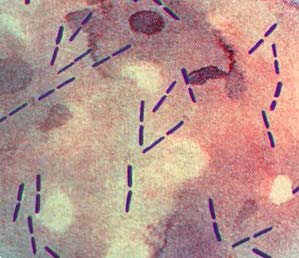Can I Sue for Clostridium Perfringens Food Poisoning?

What is Clostridium Perfringens?
Clostridium perfringens (C. perfringens) is a bacterium that can contaminate food, forming spores that spread throughout the food. These spores produce a food poisoning toxin that makes people sick when it gets to the small intestine. The illness caused by this toxin is called perfringens poisoning.
The common form of perfringens poisoning is characterized by intense abdominal cramps and diarrhea which begin 8-22 hours after consumption of foods containing large numbers of those bacteria. The illness is usually over within 24 hours, but less severe symptoms may persist in some individuals for 1 or 2 weeks.
In most instances, the actual cause of poisoning is food stored at the wrong temperature. Small numbers of the organisms are often present after cooking. These can multiply to food poisoning levels if the cool down time is too long, especially when a large quantity of food is stored in a large container. Meats, meat products, and gravy are most frequent source of these outbreaks.
This is one of the most commonly reported foodborne illnesses in the U.S.
Institutional feeding (such as school cafeterias, hospitals, nursing homes, prisons, etc.) where large quantities of food are prepared several hours before serving is the most common circumstance in which perfringens poisoning occurs. Therefore, young children and the elderly are the most frequent victims. Except in the case of necrosis enteritis (also called pig-bel), complications are few in persons under 30 years of age. Elderly persons are more likely to experience prolonged or severe symptoms.
What can be done to prevent infection?
To prevent Clostridium perfringens growth, food handlers should be sure to wash their hands before preparing or serving foods and after handling raw meat or poultry. Meat and poultry based foods should be cooked thoroughly to safe final internal temperatures. This bacteria grows best between 45° and 140°F, so it is best to keep hot foods hot (above 140°F) and cold foods cold (below 40°F). If a large portion of food is left over, it should be divided into smaller portions not over three inches deep, and promptly refrigerated so it cools quickly. Foods should be refrigerated immediately and not left at room temperature to cool. Prepared food should not be left unrefrigerated for more than two hours. Food should be reheated to at least 165°F.
Free Consultation
You can call 1-888-377-8900 or click here to contact our lawyers for your free consultation. We are a national food safety law firm that represents clients throughout the United States in personal injury and wrongful death lawsuits against food companies, restaurants, and others.